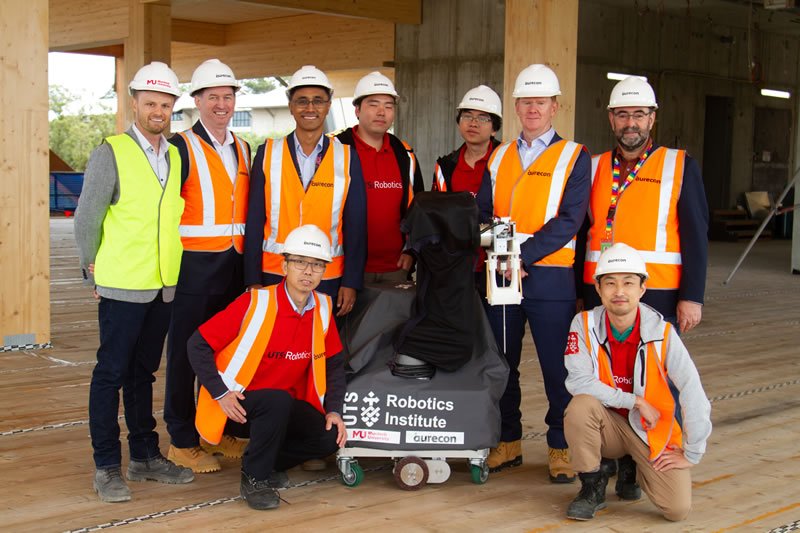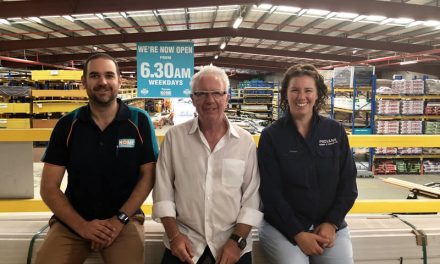Two major unis and a leading building firm have given a trial construction robot its first day on the job.
Some construction jobs are worse than others. Screwing 500,000 connections into a mass engineered timber (MET) building is one of the less fun parts, with the repetitive task putting strain on workers.
But what if you could get a robot to do it?
“About 12 months ago, I had a conversation with one of my colleagues, saying ‘wouldn’t it be cool if we could look at a different way of constructing, looking at the way we do things and how we innovate on building sites?’” says Tim Spies, managing director built environment Australia at Aurecon.
As luck would have it, Aurecon was contracted to deliver the civil and structural engineering for Building 360 at Murdoch University’s South Street Campus in Perth. The glulam and CLT building will be the largest MET building in WA, and the uni was already using it to trial new approaches. Both parties were happy to use the build as a test case for new research projects, particularly ones that helped automate processes.
Fixing the screws that secure the mass timber elements is a time-consuming job that is easier to automate than many others on site. Aurecon and Murdoch gave their robot design partners at the University of Technology Sydney’s Robotics Institute a set of parameters for the task and the UTS team developed a trial construction robot, which had its first real-world day on the job on the Building 360 site in early May.
Professor Andrew Deeks, Vice Chancellor Murdoch University, gave the robot a glowing report card. He says, “As a university, we like to incorporate research in everything we do and so to have a research project that can look at the feasibility of using robotics in the construction of this sort of building is very much in line with our thinking.”
The UTS team completed a prototype over a month before the Perth trial. Holding the screw was one challenge, locating it a far more significant one. “Construction sites are varied, complex and changing,” says Distinguished Professor of the UTS Robotics Institute and project leader, Dikai Liu. “And that can be a real challenge for a robot to navigate and conduct operations such as drilling a screw into the right position,”
But the robot performed well on the day, accurately locating and drilling somewhere around 100 fixings. It’s a long way off finishing the build, but the proof of concept nods towards a future where people do the challenging work and robots follow up on the repetitive tasks, through the night if need be, leaving the human team to build faster and better, with fewer repetitive strain injuries or errors from tiredness. The robotics team are already working on the next, scaled-up phase of their research.
See the robot at work at www.youtube.com/watch?v=gAQiBRd64-8&t=4s
Image: Representatives from Aurecon and Murdoch University and the UTS Robotics Institute team. Courtesy Aurecon.












